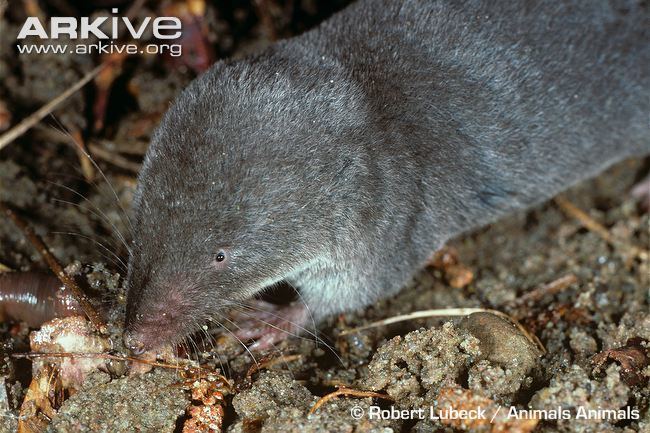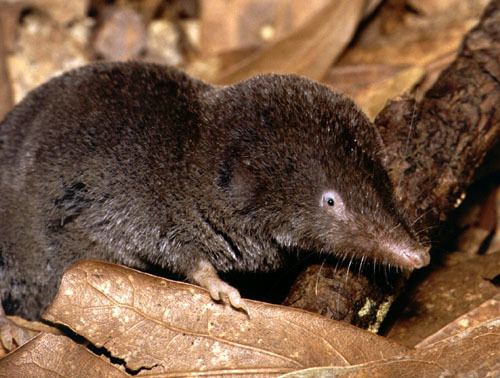Genus Blarina Rank Species | Phylum Chordata Family Soricidae Scientific name Blarina carolinensis | |
 | ||
Similar American short‑tailed shrew, Shrew, Elliot's short‑tailed shrew, Southeastern shrew, Northern short‑tailed shrew | ||
The southern short-tailed shrew (Blarina carolinensis) is a gray, short-tailed shrew that inhabits the eastern United States.
Contents
Description

The southern short-tailed shrew is the smallest shrew in its genus, measuring 7 to 10 cm (2.8 to 3.9 in) in total length, and weighing less than 14 g (0.49 oz). It has a comparatively heavy body, with short limbs and a thick neck, a long, pointed snout and ears that are nearly concealed by its soft, dense fur. As its name indicates, the hairy tail is relatively short, measuring 1.2 to 2.5 cm (0.47 to 0.98 in). The feet are adapted for digging, with five toes ending in sharp, curved claws. The fur is slate gray, being paler on the underparts.
Distribution and habitat

The southern short-tailed shrew is found in the southeastern United States, from southern Virginia to eastern Texas, and in the Mississippi valley as far as southern Illinois. Within this region, it is found primarily in pine forests. However, these range from dry to wet and even swampy habitats, as well as disturbed forests and abandoned agricultural land.
There are two recognised subspecies:


Fossils of the species are known from the Pleistocene, during which time they may have spread as far north as South Dakota.
Biology and behavior

The southern short-tailed shrew's diet consists of insects, annelids, hypogeous fungi, slugs and snails, centipedes, and spiders. Known predators include snakes, hawks, owls, and foxes. It has been known to store snails for the winter. The saliva is venomous and is injected into the wounds of its prey by the teeth. Its venom is strong enough to kill mice, but is not lethal to humans, though it causes severe pain.
The southern short-tailed shrew is a social animal; it has been known to share its burrow systems with several individuals. The male and female live together during the prebreeding season. The burrows are built in two layers, one near the surface, and a deeper one joined below it. The burrows are often built below logs, which can be penetrated and honeycombed if the log is rotten.
Reproduction
The breeding season lasts from March to November, and females have two or three litters per year. The gestation period lasts from 21 to 30 days, and each litter consists of two to six young. The young are reared in nests of grasses and leaves at the end of a tunnel reaching about 30 cm (12 in) below the ground, or in rotten logs. These nests for the young are much larger than the adults' resting nests.
